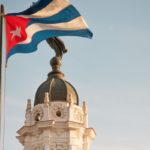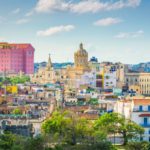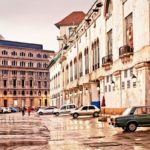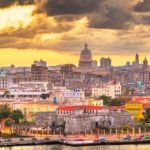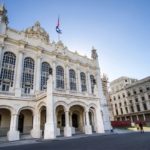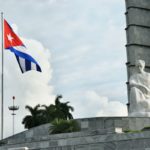Located in Old Havana, the Museum of the Revolution plays a significant role in the history of Cuba.
After the 1959 victory against the Batista dictatorship, a decision was quickly made to build a museum to tell the story of the Cuban Revolution.
Once established, the museum kept moving from building to building. However, in 1974, the former Presidential Palace became the museum’s definitive home.
This building served as the headquarters of the Cuban presidency for four decades until it was given up for use as the Museum of the Revolution.
Considering the significance of the Cuban Revolution in the history of Cuba, only a historic building would do.
The significance of the Presidential Palace
The Presidential Palace is the creation of local architect Rodolfo Maruri and Belgian architect Paul Belau. Belau famously designed the Gran Teatro de La Habana. This is a Havana theater, which is home to the Cuban National Ballet.
The building has Neo-Classical characteristics. Tiffany Studios from New York City added adornments and decor.
For the majority of the first half of the 20th century, it was Cuba’s opulent face to the rest of the world. A place where important visitors and Cuba’s presidents would convene.
President Mario Garcia Menocal inaugurated the Presidential Palace in 1920. It remained the Presidential Palace until the 1959 Cuban Revolution.
Before this, in 1957, the building was the site of an attack. A Cuban student activist group known as Directorio Revolucionario Estudiantil tried to assassinate Fulgencio Batista.
It was a two-prong attack, which also involved taking over Radio Relox. However, both episodes were unsuccessful.
Learn about how Cuba came to be what it is today at the Museum of the Revolution
The core exhibitions at the Museum of the Revolution are linked to Cuba’s struggle to end Fulgencio Batista’s dictatorship in the ‘50s.
However, there are historical pieces from other periods. Some date back to the early years of Spanish colonization in the 15th century.
Telling the story of the war against Batista
Fidel Castro and other opposition groups led a rebel movement against Fulgencio Batista due to the unbearable conditions the people of Cuba were suffering under the Batista government.
Many objects from the war against Batista are on display. They tell the story of the dictatorial regime.
A regime armed with state-of-the-art vehicles, planes, and weapons. A government that was not ashamed to practice murder and torture against its opponents.
The collection is undoubtedly a graphic one, leaving nothing to the imagination. You get a vivid picture of what life was like for the people of Cuba. You see why they were so desperate to overthrow Fulgencio Batista.
Expect to see gas torches for burning people’s backs as a form of torture. There are also tweezers and shackles used to pull the detainees’ nails.
Making your trip to the Museum of the Revolution
It costs CUC$5 (US$5) for a ticket to the Museum of the Revolution. You can pay an extra CUC$3 (US$3) for the guide’s services. Paying for a guide is not essential, but it is a good idea, especially if you do not speak Spanish or have no prior knowledge of Cuban history.
Visitors are not permitted to take backpacks and bags with them. You will need to leave them at the entrance.
Making your way around the Museum of the Revolution
It makes sense to start on the second floor. Here, you will begin your journey with an insight into Cuba during the 15th century (the colonial period).
Next, you move to the 1898 American intervention in the war against Spain. After this, the 1902 – 1959 Republican period is on display. This is considered a neo-colonial period due to the power the United States exerted over the economy and politics in Cuba.
You will then explore the pre-libration history further with an impressive display of objects associated with Fidel Castro’s 26 of July Movement.
One of the main attractions is the sculptures of Che Guevara and Camilo Cienfuegos, a fellow commander of the Rebel Army.
What about the first floor? This covers life in Cuba after 1959. The main focus is on the early years of economic, political, and social transformations.
A big highlight is the 1961 Bay of Pigs invasion. The Cuban forces were able to counter this in just three days.
There is an exterior exhibition as well; the Granma Memorial. The Granma Yacht is the central piece here.
The Museum of the Revolution: Learn all about Cuba’s history
If you are planning to visit Havana, the Museum of the Revolution is simply a must-visit. This is a great way to learn more about the history of Cuba and how it became the place it is today. The building itself is a site to behold. Yet once you step inside, you start to understand the story of this fascinating and resilient nation.
- The Art of Cuban Poster Design: History, Techniques, and Cultural Significance - May 23, 2023
- Taking A Vintage Car Tour In Havana - May 23, 2023
- Top 5 Cuban Revolutionary Sites - May 23, 2023

